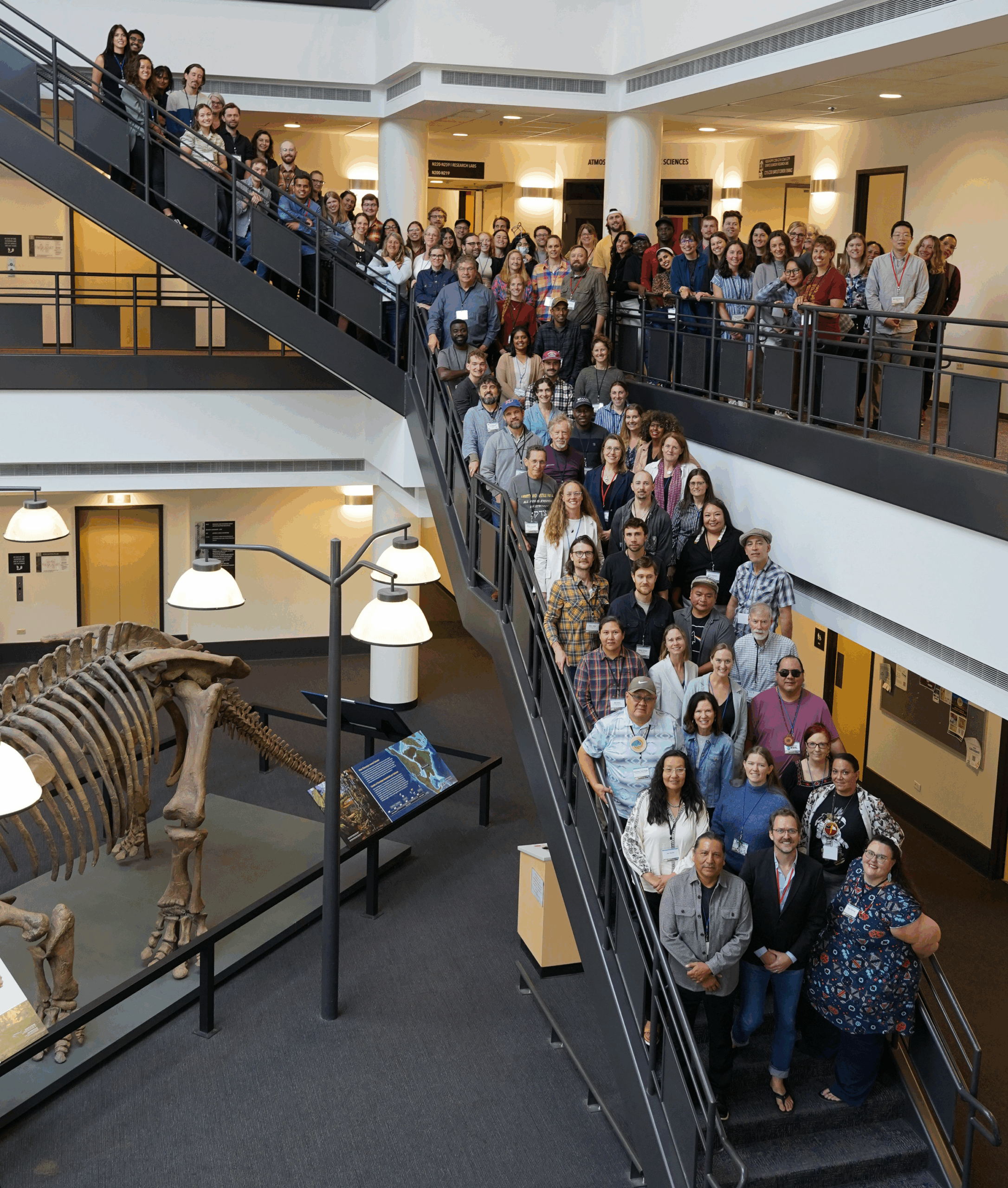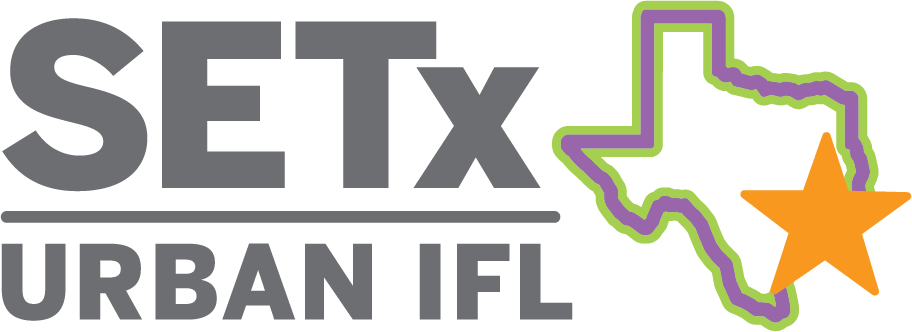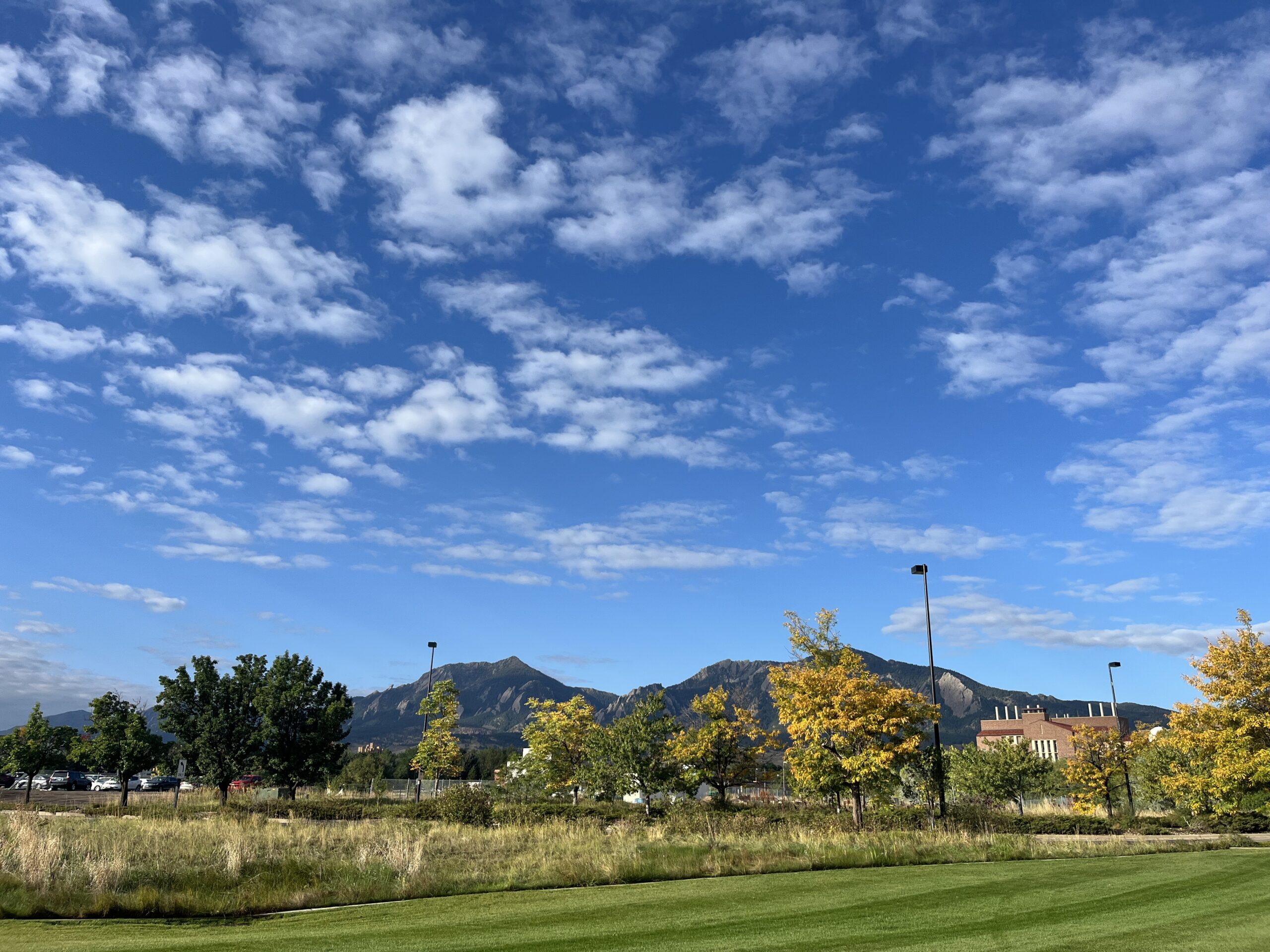When Scientists Form, Storm, Norm, and Perform for Climate: My Unconference Experience at ESIIL 2025
September 29, 2025 | Dr. Juan P. Maestre
The Environmental Data Science Innovation and Impact Lab (ESIIL) brought together over 100 researchers, data scientists, and environmental professionals from across disciplines for its third annual Innovation Summit, focusing on “Environmental Tipping Points and Transformations.” As Managing Director of SETx-UIFL and summit participant, I experienced firsthand how this unique unconference format creates space for breakthrough collaboration and innovation in environmental data science.

More than 100 participants from the Americas, Europe, Asia, and Africa attended ESIIL 2025
Building Community Through Intentional Innovation
The summit opened with a powerful blessing from indigenous community members, including Phil Two Eagle, honoring the ancestral lands and reminding participants that “our ancestors that were here are still here. Your spirits are here.” This sacred opening set the tone for the entire event, emphasizing connection to place and the interconnectedness of all participants in this work.
ESIIL Director Jennifer Balch built on this foundation with a call to action, emphasizing that environmental challenges require “all hands on deck and all ideas” to advance solutions. Her message acknowledged the pressing uncertainties facing our scientific community while emphasizing the importance of continuing our scientific work to inform critical solutions.
Deputy Director Chelsea Nagy outlined the summit’s ambitious goals: exploring big data to understand environmental tipping points, promoting ethical practices in open science, championing responsible AI use, and supporting collaborative teams across disciplines and career stages. The unconference format meant that participants shaped the agenda around topics that had emerged from a pre-summit Science Jam creative brainstorming session in August. Rather than predetermined presentations, the summit built on this foundation of participant-driven topic development.
The Collaborative Journey
Moving Through the Groan Zone to Breakthrough
Thinking
All voices welcome
Zone
Finding common ground
Thinking
Collaborative action
Concept adapted from Kaner (2014), as taught by Divergent Science facilitators
Navigating the “Groan Zone”: Science of Team Formation
One of the summit’s most valuable aspects was the explicit attention to team science and collaborative processes. Hannah Love and Ellen Fisher from Divergent Science expertly guided us through the realities of team formation, introducing concepts that transformed how we approached collaboration.
They walked us through the inevitable “groan zone” – that uncomfortable but creative space between divergent brainstorming and convergent decision-making where breakthrough insights actually happen. Drawing from research including Google’s Project Aristotle, they emphasized that successful teams depend less on who is on the team and more on how the team works together. The five critical group norms they highlighted were:
- Psychological safety – team members feel safe to take interpersonal risks
- Dependability – teammates follow through on commitments
- Structure and clarity – roles, plans, and goals are clear
- Meaning – work has personal significance for each member
- Impact – team members understand how their work contributes to organizational goals
This framework proved essential as we formed working groups around specific environmental challenges. The facilitators taught us practical decision-making tools ranging from simple thumbs up/down votes to gradient scales of agreement, helping teams move efficiently through complex choices without getting stuck in endless discussion.
Cutting-Edge Research Perspectives
The summit featured several keynote presentations that provided scientific depth and inspiration for our collaborative work:
Carl Boettiger from UC Berkeley delivered a thought-provoking talk on “Critical Transitions, Uncertainty, and the Quest for Model-Free Decisions,” challenging traditional approaches to predictive modeling and emphasizing the importance of decision-making frameworks that can handle uncertainty without requiring perfect forecasts.
Joan Dudney from UC Santa Barbara presented groundbreaking work on “Using Causal Inference to Detect Climate Change Impacts in Ecological Systems,” demonstrating sophisticated methodological approaches borrowed from epidemiology and econometrics to establish causal relationships in observational environmental data.
Katherine Siegel from CU Boulder shared insights on “Predicting and Managing Ecological Transformations for Climate-Adapted Landscapes,” focusing on the resist-accept-direct framework for managing ecosystem changes in places like the Greater Yellowstone Area, directly relevant to our work on climate adaptation and landscape management.
Collaborative Innovation in Action
The summit’s unconference structure created space for 18 different working groups to form around participant-driven topics. These groups tackled diverse challenges including:
- Defining tipping points across different languages and cultural perspectives on sustainability and resilience
- Understanding environmental drivers behind regime shifts, including the effects of multiple stressors and disturbances
- Detecting and predicting tipping points using automated anomaly detection and spatially explicit models
- Social drivers of transformation, from indigenous land management to urban policy responses
- Environmental impacts of transformations on ecosystem services and species interactions
- Management and adaptation strategies for building resilience across communities and ecosystems
Our group, Group 18, focused on data interoperability challenges – “From Data Chaos to Community Standards.” This topic connects to SETx-UIFL’s mission of enhancing climate resilience through improved data accessibility and usability. We worked on developing evidence-based approaches to metadata standards that researchers will actually adopt, recognizing that current FAIR (Findable, Accessible, Interoperable, Reusable) initiatives often create technically sophisticated but practically challenging requirements.
Our team established collaborative norms that proved essential to our process: welcoming all voices, building consensus through “yes and” mentality, practicing active listening with curiosity rather than judgment, grounding our work in evidence rather than assumptions, maintaining transparency about AI tool usage, and ensuring dependability through regular check-ins. These norms weren’t just aspirational – they actively shaped how we navigated disagreements and structured our work throughout the intensive collaboration.
Technology and Infrastructure
A significant component of the summit involved hands-on work with ESIIL’s cloud computing infrastructure, including their OASIS platform (Open Analysis and Synthesis Infrastructure for Science). Tyson Swetnam and the technical team demonstrated how participants could access powerful computing resources and collaborative workspaces without the typical barriers of institutional computing limitations.
Prior to the summit, participants engaged in pre-training sessions that prepared them for the collaborative work ahead. These included the August Science Jam for creative brainstorming, a September session on navigating CyVerse & GitHub for advanced computation, and workshops on creative data exploration in the cloud. These trainings ensured participants arrived ready to work effectively with cutting-edge tools and infrastructure.
The summit also addressed the growing role of AI in environmental research, with transparent discussions about appropriate use cases, ethical considerations, and the importance of maintaining human judgment and creativity in scientific inquiry. This aligns with SETx-UIFL’s interest in leveraging advanced technologies while maintaining scientific rigor and ethical standards.
Environmental Justice and Inclusive Science
Throughout the summit, there was intentional attention to environmental justice, indigenous knowledge systems, and inclusive approaches to data science. ESIIL deliberately invited and centered indigenous voices throughout the event, ensuring their perspectives were woven into the fabric of the collaborative work rather than treated as an afterthought. Multiple working groups explicitly addressed questions about whose voices are included in environmental decision-making and how traditional ecological knowledge can inform modern data science approaches.
The summit concluded with an equally powerful moment as Elisha Yellow Thunder offered an emotional farewell that reminded everyone of our fundamental interconnectedness. Her closing words emphasized themes of belonging, our deep connection to the land, what that means to each of us personally, and how we are all interconnected in this shared work of environmental stewardship. This bookending of the summit with indigenous wisdom created a sacred container for the scientific collaboration that took place in between.
This focus on inclusion and justice resonates strongly with SETx-UIFL’s commitment to serving diverse communities in Southeast Texas, where environmental challenges disproportionately affect vulnerable populations and where local knowledge and community engagement are essential for effective climate adaptation.
Connections to SETx-UIFL Priorities
The summit’s focus on environmental tipping points and transformations directly connects to several key areas of SETx-UIFL’s work:
Climate Adaptation: Many working groups addressed how communities and ecosystems can build resilience to rapid environmental changes, central to our mission in the climate-vulnerable Gulf Coast region.
Data Integration: The emphasis on harmonizing diverse environmental datasets speaks to our need for integrated approaches to understanding complex socio-environmental systems in Southeast Texas.
Community Engagement: The summit’s attention to stakeholder involvement and environmental justice aligns with our commitment to community-driven research and solutions.
Technology Transfer: ESIIL’s cloud computing infrastructure and collaborative platforms offer models for how academic institutions can provide accessible, high-quality research tools to diverse user communities.
Moving Forward: Beyond the Summit
The summit concluded with concrete commitments for continued collaboration. Many groups, including ours, plan to submit papers to a special issue of Environmental Data Science journal on “solution-based data science for environmental challenges.” Others are developing proposals for ESIIL working groups that would provide two years of support for sustained collaborative research.
The summit reinforced that environmental challenges require not just better data or more sophisticated models, but fundamentally different approaches to collaboration across disciplines, institutions, and communities. The unconference format, team science training, and explicit attention to group dynamics created conditions where genuinely innovative ideas could emerge from the intersection of diverse perspectives and expertise.
For SETx-UIFL, the summit provided valuable insights into scaling collaborative approaches to environmental research, accessing advanced cyberinfrastructure, and connecting local challenges to broader networks of environmental data scientists working on similar problems worldwide.
As we continue our work in Southeast Texas, the relationships, methods, and insights from this summit will accompany our efforts to build more resilient and equitable responses to environmental change.

